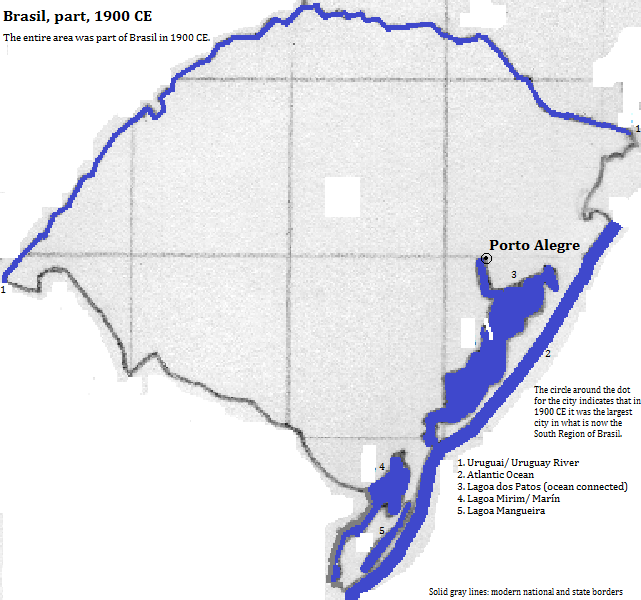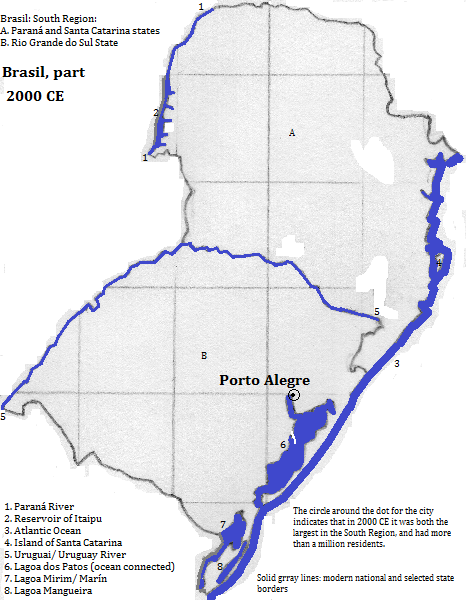Porto Alegre
Porto Alegre, a metropolitan area of 4.006 million,1 with 1.472 million in the city proper,2 is located at the northeast end of Guaíba, a bay that is an extension of the ocean-connected Lagoa3 dos Patos. Despite being 275 kilometers from the Atlantic proper, it serves vessels of up to 7000 tons. The city emerged as important by 1900 CE. The tallest structure is the Chaminé (chimney) da Usina do Gasômetro (384 feet, 1937). Other famous buildings include the Centro Administrativo do Estado (state administrative building) do Rio Grande do Sul, a curvy building (274 feet, 1983); the Assembléia Legislativa do Estado (state legislative assembly) do Rio Grande do Sul (1967); the Casa de Cultura (culture house) Mário Quintana (1933), named after a poet who lived there when it was a hotel; the Mercado Público (public market, 1869); Museu de Arte (art museum) do Rio Grande do Sul (1915); and the Memorial do Rio Grande do Sul (1913), a former post office.4
The city is served by Salgado Filho International Airport, one of Brasil's busiest.5
| Year | Population | Political entity |
| 1900 CE | 73,0006| Brasil | |
| 2000 CE | 4,006,0001| Brasil | |
External references
Administrative Center and other buildings, Porto Alegre, Rio Grande do Sul (Southern Grande River) state, Brasil (Brazil)
Historical Maps


Footnotes
1. 2012 figure from world-gazetteer.com, accessed February 6, 2013.
2. https://en.wikipedia.org/wiki/List_of_largest_cities_in_Brazil, accessed August 31, 2015.
3. Lagoa translates imprecisely as 'lagoon.'
4. emporis.com, accessed April 29, 2016.
5. https://en.wikipedia.org/wiki/List_of_the_busiest_airports_in_Brazil, accessed August 31, 2015. Selection criterion: those with over one million passengers in 2015.
6. Tertius Chandler, Four Thousand Years of Urban Growth, 2nd ed. (The Edwin Mellen Press, 1987), "Tables of World's Largest Cities". Porto Alegre was the largest city in what is now the South Region in 1900.

